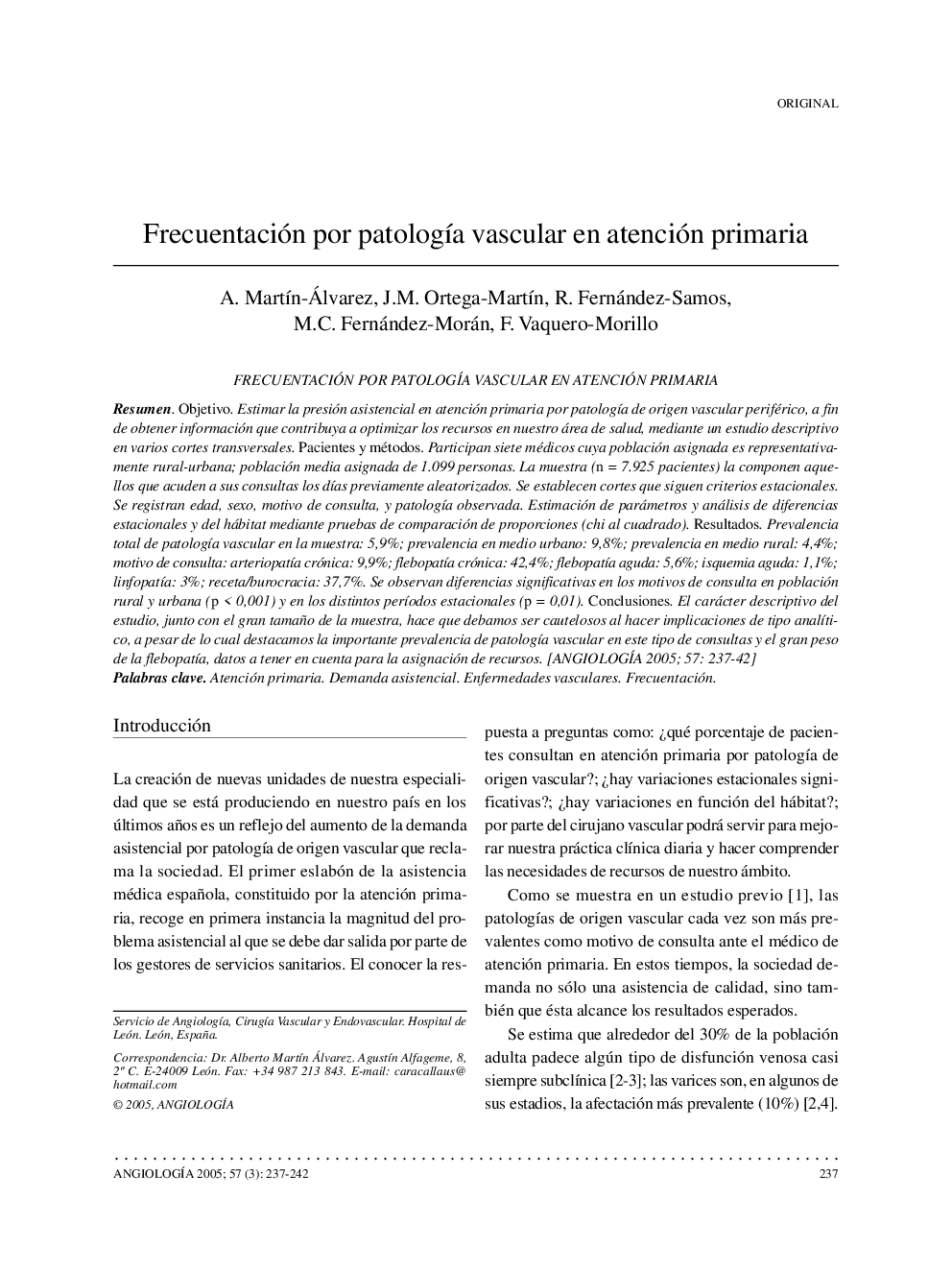| Article ID | Journal | Published Year | Pages | File Type |
|---|---|---|---|---|
| 9156833 | Angiología | 2005 | 6 Pages |
Abstract
Aim. To estimate the rate of care in primary care units due to pathologies of a peripheral vascular origin, in order to obtain information that can be used to optimise the resources in our health district, by means of a descriptive study involving several cross-sections. Patients and methods. Seven physicians, whose assigned population is representatively rural-urban, took part in the study; the mean assigned population consisted of 1,099 people. The sample (n = 7,925 patients) was made up of those individuals who visited their surgeries on previously randomised days. Cut-off points were set following seasonal criteria. Age, sex, reason for visiting, and observed pathology were all recorded. Estimation of parameters and analyses of seasonal differences and habitat were performed by means of tests for comparing proportions (chi squared). Results. The total prevalence of vascular pathology in our sample was 5.9%; prevalence in the urban environment: 9.8%; prevalence in the rural environment: 4.4%; reason for visiting: chronic arterial disease: 9.9%; chronic vein disease: 42.4%; acute vein disease: 5.6%; acute ischaemia: 1.1%; disorders affecting the lymphatic system: 3%; prescriptions/paperwork: 37.7%. Significant differences were observed in the reasons for visiting between the rural and the urban populations (p < 0.001) and in the different seasonal periods (p = 0.01). Conclusions. The descriptive nature of the study, together with the large size of the sample, mean that we should be cautious about drawing conclusions of an analytical type. Nevertheless, we still highlight the high rate of prevalence of vascular pathologies in this kind of visits and the significant weight of vein diseases, which are data to be borne in mind when it comes to allocating resources. [ANGIOLOGÍA 2005; 57: 237-42]
Keywords
Related Topics
Health Sciences
Medicine and Dentistry
Cardiology and Cardiovascular Medicine
Authors
A. MartÃn-Álvarez, J.M. Ortega-MartÃn, R. Fernández-Samos, M.C. Fernández-Morán, F. Vaquero-Morillo,
